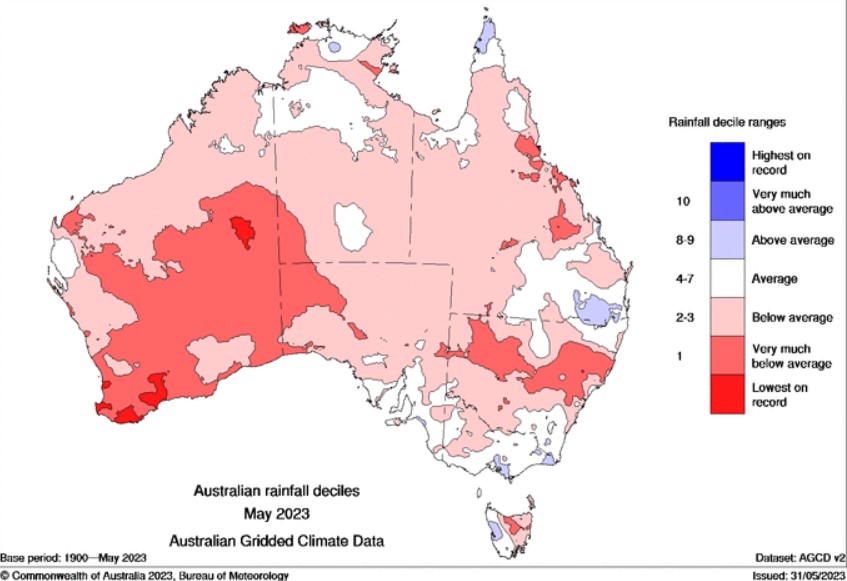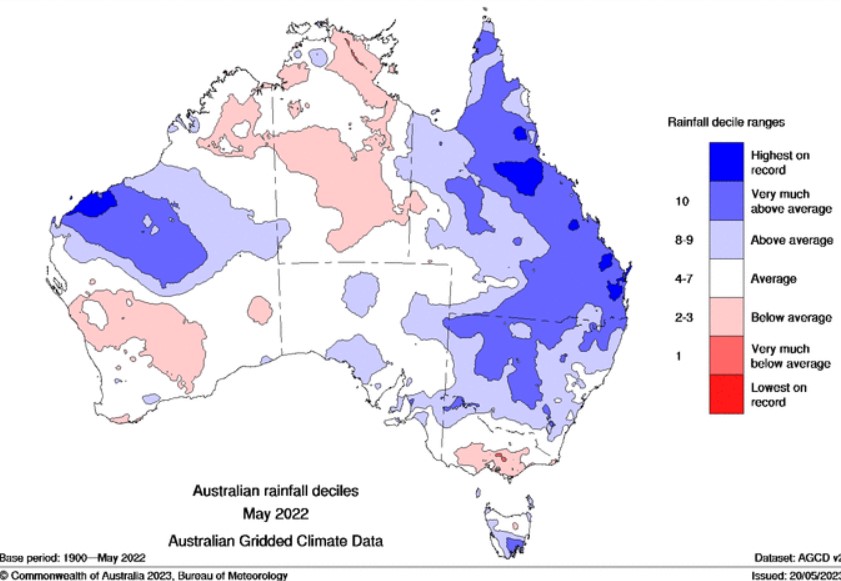Australia just had its second-driest May on record
Autumn was 10.1% drier than usual across Australia, but the rain taps really turned off towards the end of the season, with the second-driest May in 124 years of records.
For its monthly summaries, the BoM averages rainfall across Australia as a whole, and in May we saw:
- Rainfall that was 72.8% below average for May across Australia as a whole (based on the 30-year baseline period from 1961-1990 which is used in accordance with the WMO's standard).
- Rainfall that was below average across most parts of Australia except for small areas in the east and south-east (such as Melbourne, which we wrote about earlier this week).
Take a look at the rainfall decile chart below for Australia in May. The map is dominated by pink and red areas that show below average rainfall, very much below average rainfall, or even the lowest rainfall on record.

Image: La Niña seems a distant memory. It's also worth noting that the blue blob in SE Qld was basically from just one day of very heavy rainfall. Source: BoM.
The picture above which is vastly different from recent La Niña years. And while El Niño has not yet been declared, it's the sort of chart we can expect to see more often in coming months if it is.
For comparison, below is the same chart for May 2022, when rainfall was 40% above average for Australia as a whole.

Image: May 2022, much wetter than May 2023. Source: BoM.
Some other interesting tidbits from the seasonal summary for autumn 2023 included:
- A national mean temperature which was equal to the 1961–1990 average for autumn. Despite being pretty much right on average, that made the 2023 autumn the coolest since 2012, which reflects the overall warming trend in the climate
- A national mean maximum temperature which was 0.39°C above average, while the national mean minimum temperature was 0.40°C below average. These were the coolest since 2015 and 2012 respectively
- The coldest location anywhere in Australia for autumn 2023 was an interesting one. It wasn't in the usual culprit – the NSW Snowy Mountains – or another mountain district but was -9°C on May 28 in Woolbrook, a tiny village on the NSW Northern Tablelands
- For the record, the coldest May temp ever recorded in Woolbrook was -10.5°C. The lowest temp ever recorded there in any month was a bone-chilling -14.5°C in June 1994!
You can find the BoM's summary for autumn 2023 here.